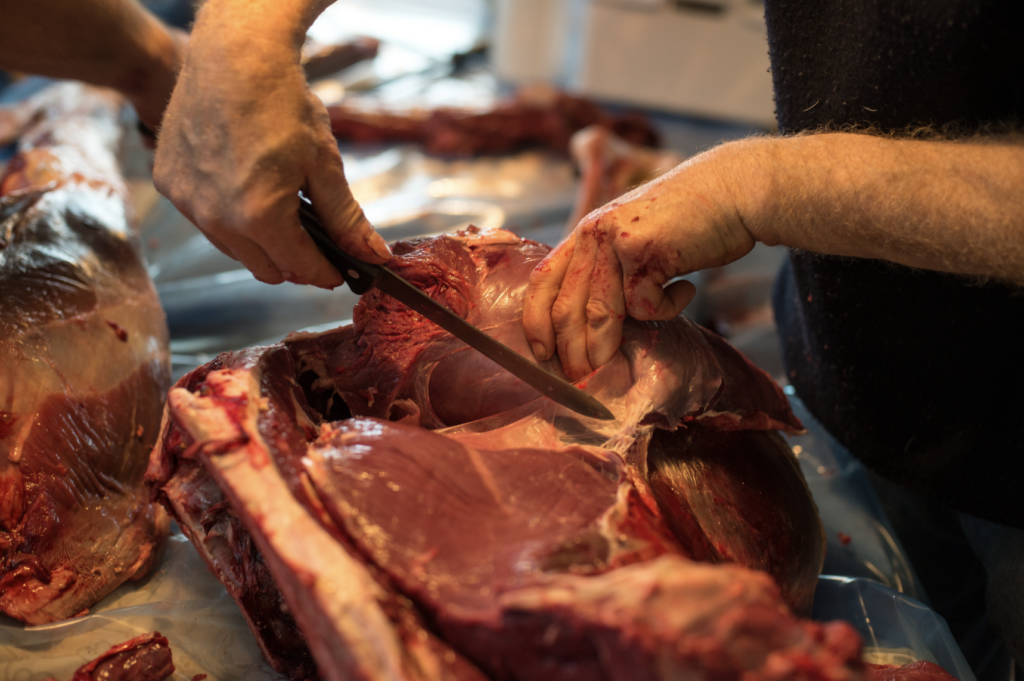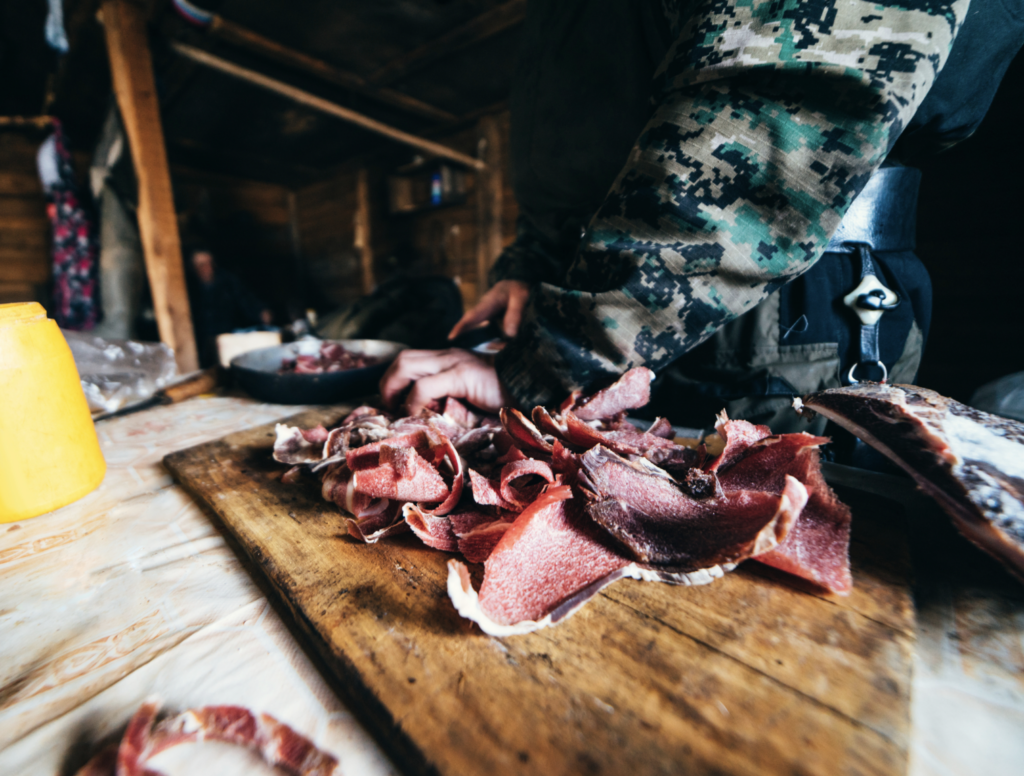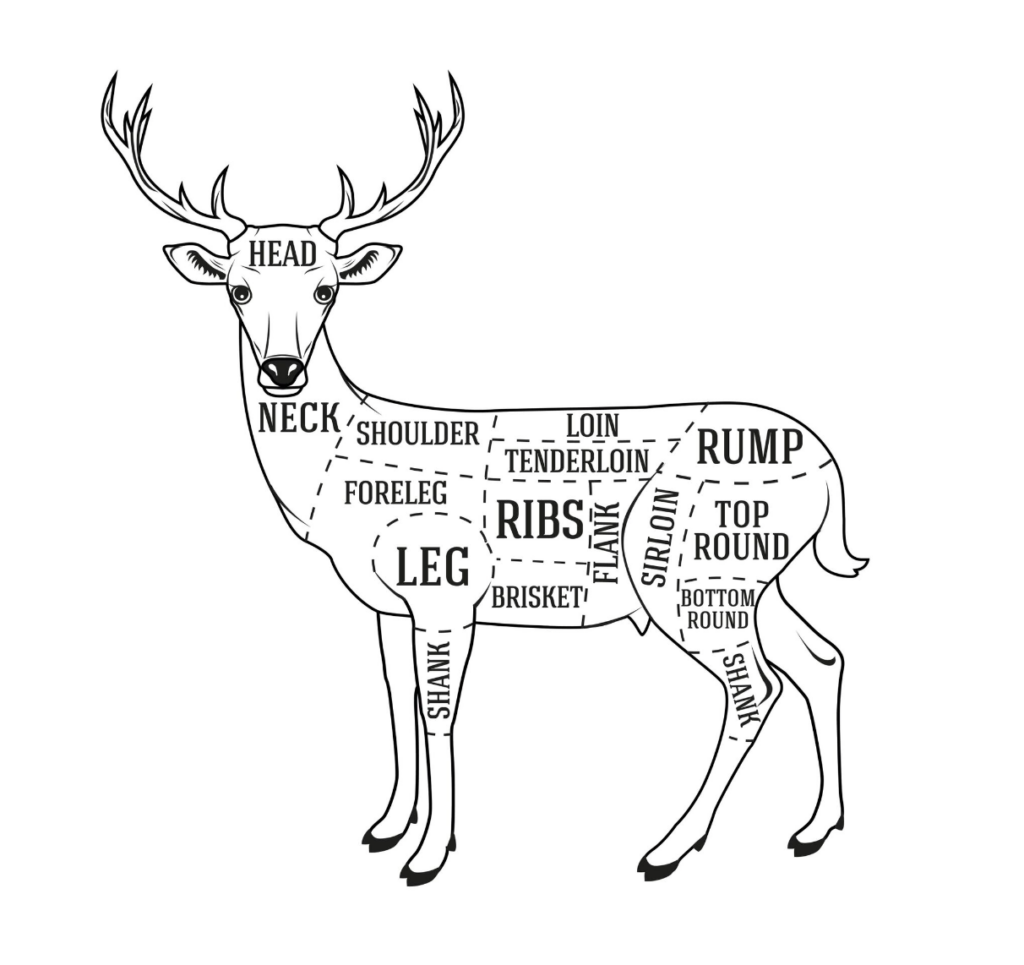
By: Scott Coe, Broker, Fay Ranches
My earliest memory of hunting is stumbling around the fields looking for pheasants with my dad and uncles at seven years old. I filled my first deer tag by the time I was nine years old and, since then, have been addicted to it, hunting every season. Growing up on a ranch in Eastern Oregon, immersing myself in the ranching lifestyle, and hunting as many days as I could, led me to my career in the hunting and real estate industries. Hunting was more than just a sport; we provided food for our friends and families. As I grew older, I was eager to experience more involved backcountry hunts. These require hunters to not only harvest, but also break down an animal, pack it out, and process the meat for the table. As a nine-year-old boy, harvesting my first big game animal was both exciting and rewarding, knowing that the meat from the animal would feed our family.
The first time I harvested, broke down, packed out, and processed an animal by myself was during a bull elk hunt in Oregon. Bull elk are large and require work to break down and pack out of remote areas. The minute the elk was harvested, the work began. I had learned how to break down an animal in the field by first seeing and helping a fellow hunter do it; he explained the process as he and I broke down the animal for the pack out. We were using the gutless technique, where we did not gut the animal, but simply cut it into quarters and stripped all the meat from the carcass that we could get off. My fellow hunter knew the animal we had just harvested would be rewarding for me, as at that time I had a new family to support. The focus of this article is on processing a large animal after harvest. Let’s assume the animal has been processed in the field and is ready to be processed for eating and storage.
Planning
Have a plan for the meat you are cutting up. Know what you want for the loins, the front quarters, the hind quarters, the neck, the ribs, and the grind (excess meat from the cuts to make hamburger). Educating yourself on the various cuts, and on how to prepare meat for consumption will help you create a plan for the processing.
For packaging the meat, I like to wrap individual cuts in plastic wrap, then in a layer of butcher paper, followed by freezer paper. Also, you can use a vacuum sealer, which is a great way to keep the meat from getting freezer burned.

Cleaning
After harvesting and packing out, it is important to get the meat clean by removing any animal hair and debris that is stuck to the meat and rinsing with cold water. When breaking down an animal in the field, it is important to try to keep the meat as sanitary as possible. This is an important step before beginning the trimming process.
Trimming
Once you have finished cleaning the meat, you will then proceed to trim. It is important to have sharp knives appropriate for trimming and cutting meat. First, trim the outer layer that has hardened. Sometimes you can remove it like a banana peel; other times, you need to trim with a knife. If you prefer cuts of meat that don’t contain much fat, it is important to remove any excess. In some instances, the fat you leave on the meat may cause it to taste a bit “gamey” when cooked and prepared for consumption. Some of the fat an animal may contain will be very wax-like, and can be a bit unpleasant when eating. Also, along with some excess fat, there will be tendons and other connective tissue that will make the meat tougher to chew. When I trim fat and tissue off the meat, I make sure I do not trim too much. Trimming too much can be a waste of good meat.
The Loins
For me, the loins are the most delicious (and are usually the most prized) cut of meat on a game animal. They are generally the most tender cuts of meat, and there are a variety of recipes to make them the most appetizing cut of the entire animal. The loins consist of the backstrap, which is the meat that runs down the animal’s spine, from the neck all the way down to the hip. In my opinion, the loins are the best when they are cut into steaks. I almost always cut the loin into steaks, and make sure they are sized for the way I plan to cook and serve them. The other loins on a big game animal are the tenderloins, located inside the animal on the underside of the spine. This portion of meat will be smaller than the backstrap, but still very tender. I prefer to eat these fresh; the sooner I can get them on the grill, the better. After removing them from the animal and getting them cleaned up, I prefer to butterfly-cut them into bite-size pieces, season them, and either grill or sear them in a pan with butter over an open fire, or on the stove. These are a favorite of mine. If you choose to save them for a later date, wrap them in plastic, followed by freezer paper, then freeze them.
The Front Quarters
As you begin to process the front quarters, which are the shoulders and down the front legs of an animal, you will want a plan for this meat. This part of the big game animal will generally be tougher meat than the hind quarters. I like to make my bone-in roast from the front quarters in a crock pot or a Dutch oven. I use excess meat from the shoulder for the grind, to package as hamburgers.

The Hind Quarters
The hind quarters are the back legs and the hind of the animal. The hind quarters can yield some very tender and delicious cuts. Butchering the hindquarters can be very simple. As you begin to cut the hind quarter, just follow the lines in the meat. The hindquarter is broken into multiple muscle groups and is just attached by a distinct thin tissue. There are multiple seams that separate the different cuts, which you follow with your knife. If you cut along these seams, the meat will start to naturally separate. As you begin this process, you can eliminate a lot of the work by pulling the meat apart with your hands, and it will come apart at the seams.
The roasts that can come from the hindquarters should end up with three huge, distinct chunks of meat: the sirloin, the top round, and the bottom round. The sirloin will generally be the biggest roast piece and will look very round. This cut can be wrapped in plastic and then in freezer paper and frozen. The sirloin also can be cut into serving-sized steaks. The top round and the bottom round can be kept as roasts and/or cut into steaks. All excess meat from the hind quarters will be put into the grind and made into hamburger.
The Neck
The neck of a big game animal can be a tough piece of meat. As with the hindquarters, there will be distinct lines you can follow with your knife, and you can cut roast out of the chunks of meat. I prefer to make most, if not all, of the neck meat into hamburger.
The Ribs
The ribs of a big game animal can be very delicious to eat if properly taken care of in the field. The ribs can easily be removed and kept in a suitable condition to enjoy at the dinner table. I cut the ribs off an animal and break them into portions that will resemble a rack of ribs that you may order in a restaurant. If you haven’t removed the ribs in the field, make sure not to hang the animal too long, or the ribs will dry out and become cured. Also, you can cut the rib meat off the bone, and it makes excellent portions of jerky-sized meat for smoking.
The Grind
The grind is all the excess meat left over from the processing of the animal. As you work through the cuts of meat, you will have small amounts left over after processing the other cuts you want. As you get to the grind, you will need a grinder to process the meat into hamburger. It is important that when you wrap the hamburger, you either vacuum pack it, or wrap it in plastic with as little air in it as possible, followed by freezer paper. There are a few things you can add to the hamburger that will give it a better consistency when cooking and add flavor. You will want to mix the game meat with either beef or pork fat, using a ten to twenty percent ratio, depending on your preference.
Concluding the Processing of Your Big Game Animal
Harvesting and processing big game takes time and effort. Preparing and executing the harvest are only the beginning steps. Processing the meat brings the journey full circle and can create a deeper appreciation for the animal. Enjoying the benefits of organically processed and harvested meat with your family is a culinary experience second to none. This always takes me back to my roots, allowing me to appreciate the obstacles our ancestors had to overcome to provide for their friends and families.
